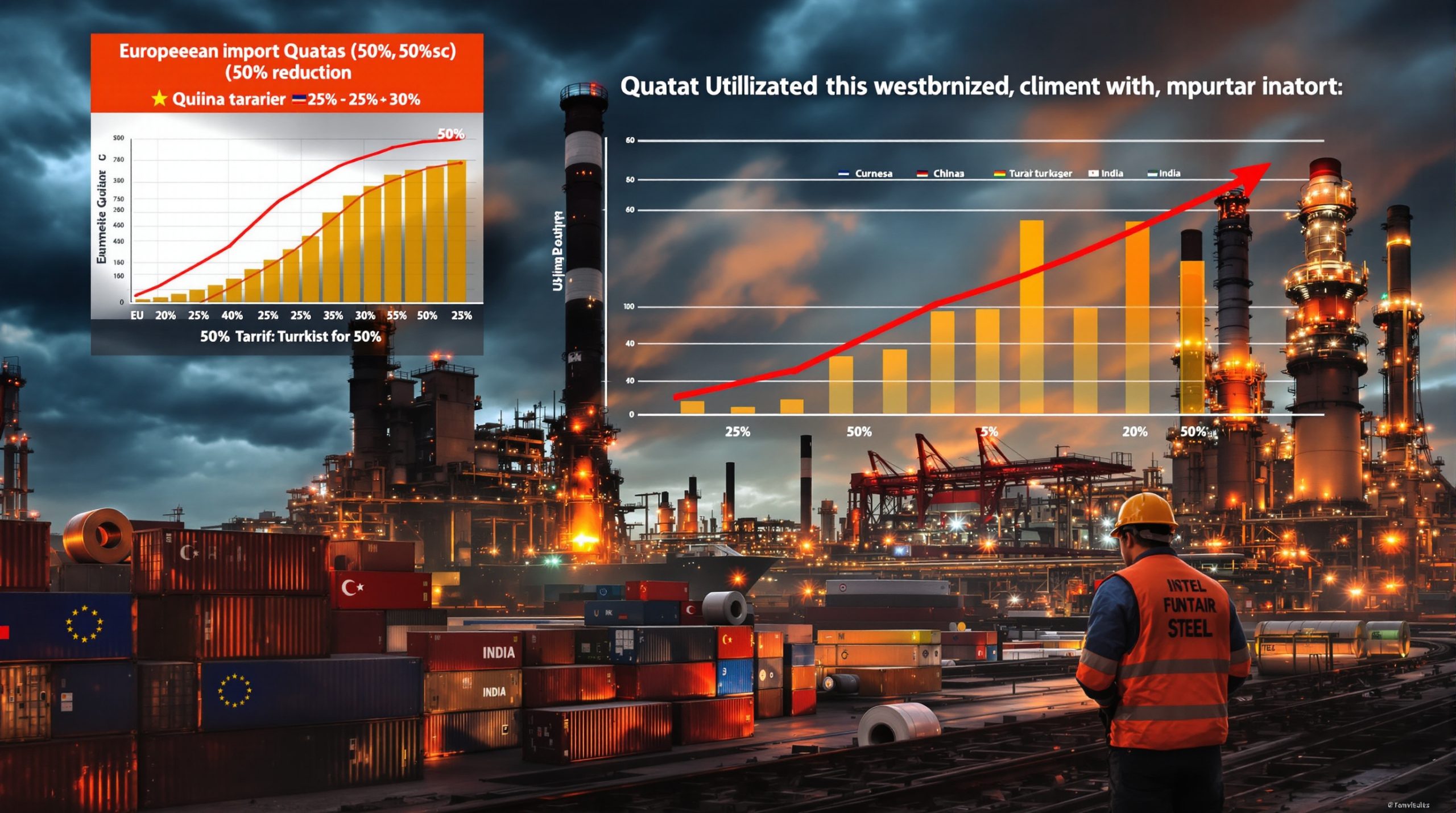Russia's Strategic Mining Asset Redistribution: UMMC's Pursuit of UGC Gold Mining Assets
Russia has embarked on a significant redistribution of property since the Ukraine conflict began, with over $50 billion worth of assets seized from Western firms and Russian owners. This represents the largest property redistribution in Russia since the privatization era of the 1990s. The government has justified these seizures through various legal mechanisms, including national security concerns and allegations of illegal acquisitions.
The scale of this redistribution is unprecedented in post-Soviet Russia, affecting industries ranging from energy to manufacturing, but with particular focus on strategic resource sectors. Courts and government agencies have created legal frameworks to facilitate these transfers while maintaining a veneer of judicial process.
The Strategic Importance of Resource Nationalization
The seizure of mining assets represents a deliberate strategy to consolidate control over critical mineral resources that form the backbone of Russia's export economy and financial stability.
Government authorities have promised to sell some seized assets, creating a controlled redistribution within approved Russian business circles while maintaining state influence over strategic sectors.
Western sanctions have accelerated this process, pushing Russia to restructure ownership of strategic resources to ensure operational continuity despite international restrictions.
This redistribution also serves geopolitical goals by strengthening domestic control of resources that can generate foreign currency revenues outside traditional banking channels.
What's Happening with UGC's Gold Mining Operations?
UGC (Yuzhuralzoloto Group of Companies), Russia's fourth-largest gold producer, became a state asset in July 2024 when the government seized control through legal proceedings. The Russian general prosecutor's office successfully transferred the majority stake to state ownership by claiming the original acquisition occurred "through corruption."
The seizure represents a significant shift in Russia's gold mining sector, transferring control of substantial production capacity to the state. This move follows a pattern seen across multiple strategic industries as Russia adapts to international isolation.
The Controversial History of UGC's Ownership
Konstantin Strukov, a Russian billionaire, originally acquired the gold-producing assets in 1997 during the post-Soviet privatization period that saw many state resources transferred to private ownership.
The assets were purchased at bargain prices from a bankrupt Soviet-era enterprise, a common practice during that era's rapid and often chaotic privatization.
The Finance Ministry currently holds the 67% controlling stake that was seized from Strukov, giving the government direct control over one of the country's significant gold producers.
Gazprombank holds 22% of UGC, with the remaining 11% held by minority shareholders, creating a complex ownership structure that combines state, bank, and private interests.
UGC's Market Position and Recent Performance
UGC conducted one of Russia's largest public offerings since the Ukraine conflict began, demonstrating continued domestic investor interest despite international restrictions.
The company's shares fell approximately 8% when news of the potential acquisition broke, reflecting market concerns about the transaction's implications.
Market analysts attribute this drop to investor concerns about a possible delisting of shares if ownership transfers to UMMC, another sanctioned entity.
The company maintains significant gold production capacity despite ownership uncertainties, continuing to contribute to Russia's strategic gold reserves and export potential.
Who is UMMC and Why Are They Pursuing UGC?
UMMC (Ural Mining and Metallurgical Company) is a major Russian copper producer currently under Western sanctions. The company is negotiating with the Russian government through its subsidiary, Atlas Mining, to acquire the majority stake in UGC that was seized by the state.
As a significant metallurgical conglomerate, UMMC's interest in gold mining represents a strategic diversification away from its core copper business, potentially strengthening its position in Russia's resource economy.
UMMC's Evolving Ownership Structure
Previous owners included billionaires Iskander Makhmudov and Alexei Bokarev, who built the company into one of Russia's largest metallurgical enterprises.
UMMC announced in 2022 that these oligarchs no longer held shares in the company, a pattern seen across sanctioned Russian businesses seeking to shield themselves from personal sanctions on owners.
The current ownership structure remains undisclosed, raising questions about who controls the company and whether the previous owners maintain unofficial influence.
The lack of transparency aligns with broader trends of obscuring ownership in sanctioned Russian businesses, making it difficult for international regulators to track control of strategic assets.
Strategic Rationale for the Acquisition
Diversification into gold mining would reduce UMMC's dependence on copper production, creating a more balanced portfolio less vulnerable to price fluctuations in any single commodity.
Consolidation of sanctioned mining assets creates operational synergies under sanctions conditions, potentially allowing for shared resources, expertise, and domestic supply chains.
The acquisition represents vertical integration in Russia's mining sector, bringing additional value chain components under unified management.
Control of both copper and gold assets would strengthen UMMC's position in the domestic market while providing alternative revenue streams during periods of metal price volatility.
What Are the Financial Aspects of the Proposed Deal?
The acquisition negotiations reveal a significant valuation gap between the government's asking price and UMMC's offer. This disparity highlights the complex dynamics of state-controlled asset sales in Russia's current economic environment.
The substantial difference in valuation perspectives demonstrates the challenges of conducting major transactions in a market isolated from international financial systems and subject to political considerations beyond pure market forces.
Valuation and Negotiation Dynamics
The Russian government is seeking approximately 100 billion rubles ($1.23 billion) for the UGC stake, establishing a high benchmark for the transaction.
UMMC has reportedly offered only half that amount, around 50 billion rubles, creating a substantial negotiation gap that reflects differing assessments of fair value under current market conditions.
The Finance Ministry announced plans to sell its 67% stake before the end of October 2024, establishing a relatively short timeline for completing the transaction.
A formal valuation process is underway to determine the final asking price, though market observers question how independent this process will be given the political context.
Predetermined Outcomes in Russian Asset Sales
Industry sources suggest there had been other bidders for UGC assets who are no longer interested, potentially due to signals that UMMC is the preferred buyer.
A formal bidding process will occur, but one source indicated the outcome is "predetermined," suggesting competitive procedures may be largely ceremonial.
This suggests the transaction may be politically guided rather than market-driven, with authorities having already selected the preferred outcome.
The acquisition process reflects Russia's approach to managing strategic assets under sanctions, balancing the appearance of market mechanisms with ensuring politically acceptable outcomes.
How Do Western Sanctions Impact This Transaction?
Both UMMC and UGC operate under Western sanctions, creating a unique environment for this acquisition. The sanctions regime has fundamentally altered how Russian mining companies operate and structure their business activities.
This transaction represents a new phase in Russia's adaptation to sanctions, with sanctioned Russian copper firm acquiring state-seized gold miner and creating larger, integrated operations that can function more effectively within the constraints of the domestic economy.
Sanctions Compliance Challenges
Western sanctions restrict international financing options for both companies, limiting their ability to raise capital from traditional sources.
The transaction must be structured to avoid triggering additional sanctions violations, requiring creative domestic financing solutions.
Domestic Russian financing will likely support the acquisition, potentially involving state banks that are already operating under sanctions restrictions.
The deal represents a consolidation within Russia's sanctions-constrained business environment, with companies adapting by creating larger, more self-sufficient domestic entities.
Market Reactions to Sanctioned Entity Transactions
UGC's share price dropped 8% when news of the potential acquisition broke, demonstrating investor concerns about the implications of ownership transfer between sanctioned entities.
Investors fear potential delisting of shares as ownership transfers to another sanctioned entity, which could further reduce liquidity and valuation.
The transaction signals continued isolation of Russian mining assets from global markets, reinforcing separate domestic and international mining ecosystems.
Domestic investors must evaluate the risks of participating in sanctioned company securities, balancing potential returns against reduced liquidity and international isolation.
What Does This Reveal About Russia's Mining Sector Strategy?
The proposed acquisition of UGC by UMMC provides insights into Russia's broader strategy for its mining sector under sanctions. The government is actively reshaping ownership structures while maintaining domestic control of strategic resources.
This consolidation trend suggests a deliberate policy to create fewer, larger mining conglomerates capable of operating effectively despite international restrictions and able to maintain both production levels and government influence.
Consolidation of Strategic Resources
The transaction represents a pattern of consolidating critical mineral assets under trusted entities that have demonstrated loyalty to state objectives.
Gold production remains strategically important for Russia's economic resilience, providing access to a globally fungible commodity despite banking restrictions.
The government is creating larger, integrated mining conglomerates through directed asset transfers, potentially improving operational efficiency despite international isolation.
This consolidation may enhance operational efficiency while maintaining state influence, balancing commercial viability with strategic objectives.
Future of Russian Mining Under Sanctions
The transaction suggests Russia is adapting to long-term sanctions through domestic restructuring rather than expecting rapid normalization of international relations.
Gold mining provides Russia with access to a globally fungible commodity despite sanctions, as physical gold can be traded through alternative channels and partners.
Copper and gold production under single ownership creates diversified revenue streams that help insulate companies from market volatility in individual commodities.
The mining sector remains central to Russia's economic strategy despite international isolation, with particular focus on resources that can generate foreign currency earnings.
What Are the Broader Implications for Global Mining Markets?
The consolidation of Russian mining assets under sanctioned entities has implications for global mineral markets, particularly for gold market performance and copper supply chains. These changes affect pricing, trade flows, and investment patterns across international commodities markets.
As Russian resource companies restructure under sanctions, global supply chains are adjusting to new realities, with some market segments seeking alternative sources while others develop new trade relationships with Russian producers.
Impact on Global Gold Markets
Russia ranks as one of the world's largest gold producers, and changes in its production ownership structure potentially influence global supply dynamics.
Consolidation of production under sanctioned entities may affect how Russian gold reaches markets, potentially creating new trade intermediaries and pathways.
Western refiners and banks increasingly avoid Russian-origin gold, creating segmentation in global gold prices analysis between Western and alternative trading systems.
Alternative markets and trade routes are developing for Russian precious metals, particularly involving trading partners less aligned with Western sanctions policies.
Copper Market Considerations
UMMC's diversification into gold may affect its copper production priorities, potentially influencing investment allocations between different mineral assets.
Russian copper faces similar challenges to gold in international markets, with some traditional buyers seeking alternative sources.
Domestic consumption may increase as export options remain limited, potentially redirecting metals to internal infrastructure and manufacturing.
The transaction represents vertical integration across multiple mineral commodities, creating more resilient business models capable of weathering sanctions-related market disruptions.
How Does This Fit Into Russia's Broader Economic Strategy?
The redistribution of mining assets reflects Russia's adaptation to economic isolation and its strategy to maintain control over strategic resources despite international pressure.
This process represents not just a reaction to sanctions but a proactive restructuring of ownership to ensure continued operation of critical economic sectors under conditions of limited international engagement.
Economic Sovereignty Through Resource Control
Mining assets provide Russia with commodities that can be traded despite banking restrictions, offering alternative pathways to foreign currency earnings.
Gold production specifically offers monetary flexibility outside the dollar-dominated system, providing physical reserves that don't depend on international financial infrastructure.
The government maintains influence through directed sales of seized assets, ensuring strategic resources remain under politically acceptable control.
Strategic resources remain under Russian control despite ownership changes, creating the appearance of privatization while ensuring alignment with state objectives.
The Pattern of State-Directed Asset Redistribution
Over $50 billion in assets have been seized and redistributed since the Ukraine conflict began, representing a fundamental restructuring of Russia's economy.
The process typically involves legal justifications followed by transfers to approved entities, maintaining a veneer of rule of law while achieving political objectives.
The system creates the appearance of market transactions while ensuring politically acceptable outcomes, balancing commercial viability with strategic imperatives.
Mining assets are particularly targeted due to their strategic and economic importance, representing both domestic industrial capacity and international earning potential.
What's Next for UGC and Russian Gold Mining?
The acquisition process is moving forward with a timeline established by the Finance Ministry. The outcome will reshape Russia's gold mining sector and potentially impact global markets.
This transaction represents not just a change in ownership but a structural shift in how Russian gold mining operates, with implications for production priorities, investment patterns, and market relationships.
Timeline and Process
The Finance Ministry plans to complete the sale before the end of October 2024, creating a relatively compressed timeline for finalizing negotiations.
A formal valuation process is underway to establish the final asking price, though the significant gap between initial offer and asking price suggests challenging negotiations ahead.
The bidding process will provide a veneer of competition despite the "predetermined" outcome reported by industry sources.
The transaction will likely conclude within the government's established timeframe, reflecting the political priority assigned to completing the restructuring.
Future Operational Considerations
Integration challenges will emerge as UMMC absorbs UGC's operations, requiring alignment of management systems, corporate cultures, and operational approaches.
Production efficiencies may be realized through combined management, potentially leading to rationalization of overlapping functions and shared infrastructure.
Investment in mining expansion may increase under new ownership if the combined entity can access sufficient domestic capital despite sanctions restrictions.
The transaction represents continuing evolution of Russia's mining sector under sanctions, with companies adapting through consolidation, vertical integration, and domestic focus.
FAQ: Understanding Russia's Mining Asset Redistribution
Why is Russia seizing and redistributing mining assets?
Russia is consolidating control over strategic resources while restructuring ownership to adapt to Western sanctions. The government uses legal mechanisms to justify seizures, then directs assets to approved entities, maintaining both state influence and operational continuity.
How does the UGC seizure compare to other asset redistributions in Russia?
The UGC seizure follows a pattern seen across multiple sectors, where assets valued at over $50 billion have been transferred to state control since 2022. Mining assets are particularly targeted due to their strategic importance and ability to generate foreign currency.
What impact will this have on global gold supply?
While Russia remains a major gold producer, Western sanctions have already disrupted traditional supply chains. This consolidation may further isolate Russian gold production from Western markets while strengthening alternative trade relationships with non-sanctioned partners.
How are Russian mining companies adapting to sanctions?
Russian mining companies are consolidating operations, obscuring ownership structures, developing alternative trade routes, and increasing domestic integration. These adaptations aim to maintain operational viability despite restricted access to international markets and financing.
Further Exploration:
Readers interested in learning more about developments in the Russian mining sector can also explore related educational content on gold price forecast trends and industry consolidation trends, as well as understanding the broader relationship between gold and economic cycles through a comprehensive gold stock market guide.
Ready to Spot the Next Major Mining Discovery Before the Market?
Stay ahead of significant mineral discoveries on the ASX with real-time alerts powered by Discovery Alert's proprietary Discovery IQ model, turning complex data into actionable investment opportunities. Explore historic examples of exceptional returns from major discoveries by visiting the Discovery Alert discoveries page and position yourself for success in the mining investment landscape.




